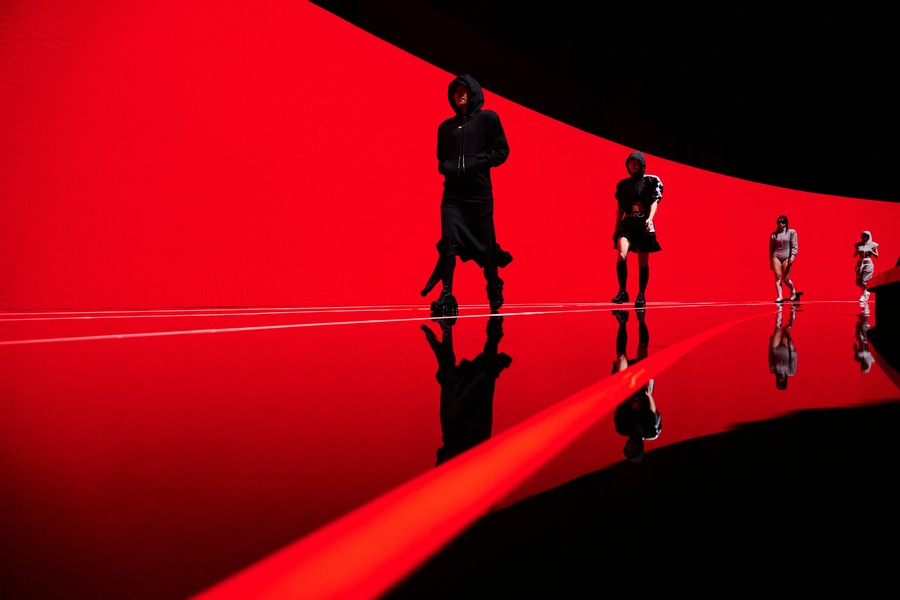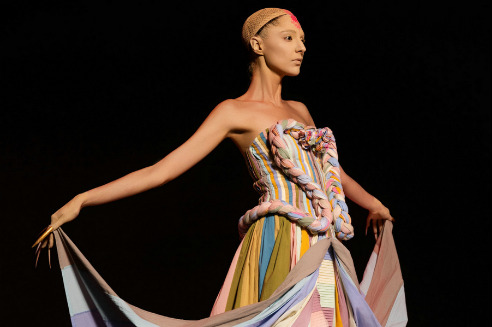Scientific innovations focus on blind people's challenges


"Visually impaired children have to be really cautious when touching the dots of a traditional Braille book," said Song Yanlin, a professor at the Institute of Chemistry, Chinese Academy of Sciences.
While Braille can only be imprinted on specially imported paper, which costs 15 to 20 times more than regular paper, the raised dots within Braille books can easily become flattened with repeated reading. The high expense and scarcity of Braille books can hinder educational opportunities for visually impaired children.
Recognizing the urgent need for innovation in Braille printing technology, Song and his team embarked on a mission to enhance the quality and efficiency of Braille printing. Their research subsequently helped revolutionize Braille printing and improved printing accuracy at multiple levels.
The new Braille printing technology has been promoted in China to the forefront in the field of global green Braille printing.
Investing in innovation
A traditional Braille printer embosses dots onto a special kraft paper using metal plates, but books printed using this method may not be durable. Song suggested transforming the conventional Braille printing process to make it more accessible.
"By precisely controlling the formation of ink droplets and manipulating each droplet to create a slightly raised structure, a basic Braille dot can be represented," Song said.
The primary hurdle for Song and his team was in tackling the "coffee-ring effect", a persistent issue in the field of printing in which a liquid, like a drop of coffee, evaporates on a surface, resulting in a ring-like pattern.
Since 2006, Song and his team have concentrated on studying the coffee-ring effect in inkjet printing. They effectively managed nanoscale interface properties between the ink and substrate, averting any unexpected spreading of ink droplets.
Based on this breakthrough, they printed the smallest ink dots recorded, with each containing just a few nanoparticles. These dots were interconnected to produce the finest lines, then the sleekest surfaces.
The achievement marks a leap beyond traditional six-dot printing in Braille. With this new printing technology, Braille is not confined to text alone. It can also generate intricate graphics, aiding visually impaired students in comprehending complex mathematical concepts.
"By achieving this, blind children can also experience the beautiful curves of mathematical functions, appreciate three-dimensional topographical maps, and enjoy the pleasure brought by graphics and patterns through the touch of their fingertips," he said.
Researchers also used environmentally friendly nano-antibacterial ink on 3D materials.
"This material permeates the surface of the paper, deeply integrating with the paper fibers through capillary force. It can firmly bond with the paper surface, so Braille dots will be highly resistant to friction, ensuring the durability of Braille books," Song said.
In addition to printing on paper, the new technology facilitates printing on a variety of other materials. Song crafted a specialized Rubik's Cube for the visually impaired, featuring distinct patterns on each face. The technology has the potential to be incorporated into the daily life and needs of the visually impaired, such as in the design of packaging and bags, Song said.
During a visit to the Beijing School for the Blind, Song found that a number of visually impaired children exhibited exceptional proficiency in solving Rubik's Cube puzzles, often surpassing other children in both speed and skill.
"Blind children are born without intellectual difference compared with sighted children. However, the disparity widens due to limitations in their educational opportunities," he said.
"Our goal is to bridge this gap. We aim to enrich the cultural experiences of those unable to perceive the world through their eyes."
The Braille printing technology was adopted during the 2022 Beijing Winter Olympics and Paralympics. The team printed bilingual books to include visually impaired audiences. It covered athlete guides, venue descriptions, real-time event updates, and extensive tactile maps placed around event locations.
"It marked a historic moment in the Olympics as it represents the first widespread use of inclusive materials catering to both sighted and visually impaired audiences," Song said.




































